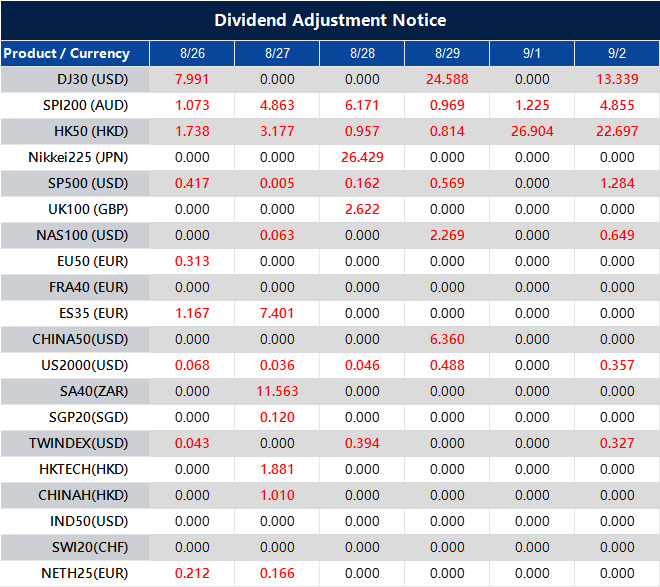Credit Agricole expects the Fed to make two rate cuts because of ongoing inflation pressures
Barclays’ model indicates dollar weakness, mainly driven by US equities and bonds, excluding the euro and yen.
Neutral Outlook for the Euro and Yen
The euro and yen are stable due to the strong performance of European and Japanese bond markets. This helps offset the selling pressure on the dollar. In the upcoming month, we expect selling pressure on the U.S. dollar against most currencies. The S&P 500 has gained 1.5% this August, causing large funds to sell dollar-denominated stocks to balance their portfolios. This selling is likely to influence dollar prices as the month ends. For traders, this indicates a strategy of betting on a weaker dollar, especially against commodity currencies like the Australian and Canadian dollars. Buying short-term call options on AUD/USD or NZD/USD could be a smart way to take advantage of this expected dollar decline. These rebalancing flows are usually predictable and can overshadow other market trends.Euro and Yen as Exceptions
However, the euro and yen are expected to behave differently, likely staying stable against the dollar. The strong performance of European and Japanese government bonds this month is countering the weaker dollar trend. For example, German 10-year bund yields fell 20 basis points in August, balancing out pressures from US equity markets. This suggests selling short-term volatility in EUR/USD could be a good strategy. Last week’s comments from the Jackson Hole symposium should be seen as a minor factor for now. While the Fed hinted at a possible pause, the market is mainly focused on large month-end liquidity events. The lack of strong policy commitments means that these technical flows will dominate. This pattern is similar to what we observed in parts of 2023, where market flows often influenced currency movements when there were no major economic surprises. We predict this trend will continue over the next week or two. Therefore, opting for strategies that benefit from a gradual decline in the dollar or stable trading ranges is the wisest approach. Create your live VT Markets account and start trading now.European markets open lower as French stocks see the biggest decline, reflecting cautious sentiment
Traders await US employment data that could affect gold prices amid changing interest rate expectations.
Impact of NFP Data
If the NFP data is positive, it might reduce the chances of a September rate cut, which could negatively affect gold prices. On the other hand, weak data could raise expectations for more rate cuts, helping gold prices rise. Although we expect real yields to fall due to Fed easing, any adjustments to short-term interest rates may cause fluctuations in gold’s current upward trend. In the daily gold chart, prices are moving between 3,438 resistance and 3,245 support. The market remains in a range until a clear breakout happens. In the 4-hour chart, gold saw a rise but then fell back to 3,350. Buyers are likely targeting the resistance level. If prices drop further, sellers might look to reach the 3,245 support. Today’s key focus is on the US Consumer Confidence report, followed by US Jobless Claims on Thursday and the US PCE price index on Friday.FED’S Impact On Gold
The Federal Reserve’s recent dovish shift has changed the outlook, leading us to believe rate cuts are on the way this year. The market is currently forecasting a high chance of a September cut, especially after July’s Core PCE data showed a manageable 2.7%. Attention will be on the upcoming labor market data for direction. Next week, the US Non-Farm Payrolls (NFP) report will be crucial for derivative traders. It could determine the Fed’s next move and influence gold’s short-term direction. Traders should be ready for two different outcomes. If the jobs data is strong, say over 200,000, expectations for a September rate cut will likely fall, putting pressure on gold prices. In this case, traders might consider buying puts on gold futures or ETFs to hedge against or profit from a potential drop to the 3,245 support level. A solid report would challenge the current dovish stance. Conversely, if the jobs report shows less than 150,000 jobs, it would boost expectations for more rate cuts, possibly three by year’s end. This could drive gold prices higher, making call options appealing to capture the upward momentum toward the 3,438 resistance. Such low job numbers would indicate that the economy is slowing sufficiently for the Fed to take action. We saw a similar situation during the aggressive rate hikes of 2022-2023, where consistently strong labor data kept real yields high, putting pressure on gold prices. Now, with the Fed easing, lower real yields should support gold over the long term, though short-term fluctuations will be driven by data surprises. Technically, gold is trading in a defined range between 3,438 resistance and 3,245 support. Before the NFP release, traders might consider volatility plays, like buying straddles, to profit from a breakout in either direction. Until that happens, price movements are likely to stay contained. In the short term, the 3,350 level is a key pivot point. If prices dip toward this level in the coming days, it could be a buying opportunity for tactical traders looking to purchase short-dated call options, expecting a bounce. However, if prices break below this level, it would signal weakness and open the door for a move down to the main 3,245 support. Create your live VT Markets account and start trading now.Dividend Adjustment Notice – Aug 26 ,2025
Dear Client,
Please note that the dividends of the following products will be adjusted accordingly. Index dividends will be executed separately through a balance statement directly to your trading account, and the comment will be in the following format “Div & Product Name & Net Volume”.
Please refer to the table below for more details:

The above data is for reference only, please refer to the MT4/MT5 software for specific data.
If you’d like more information, please don’t hesitate to contact [email protected].




